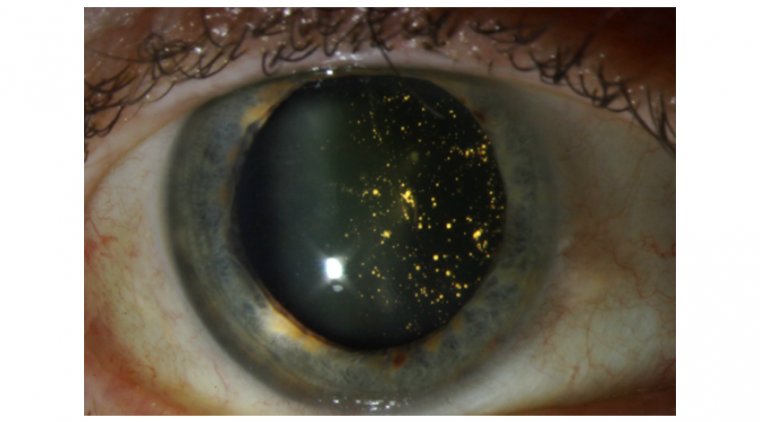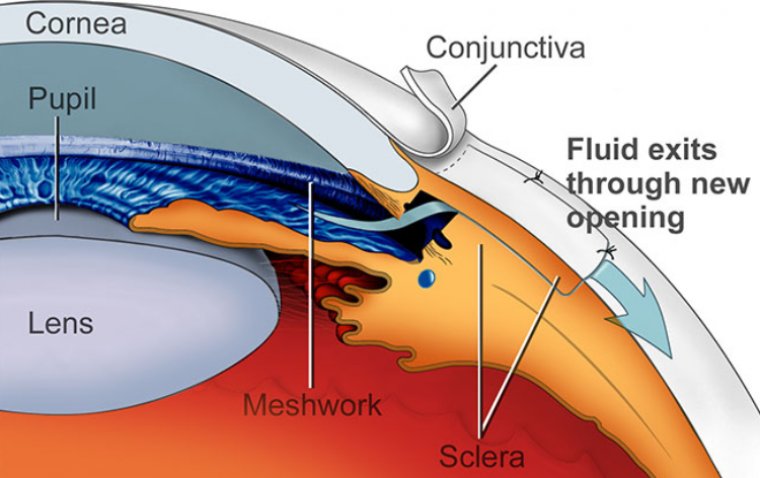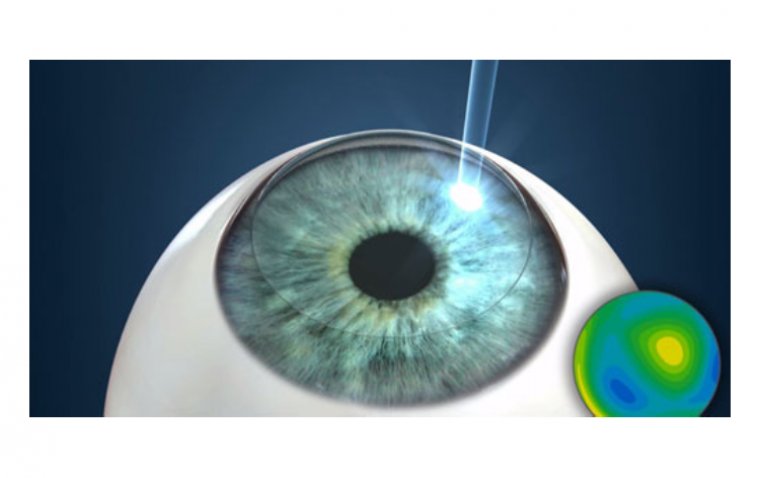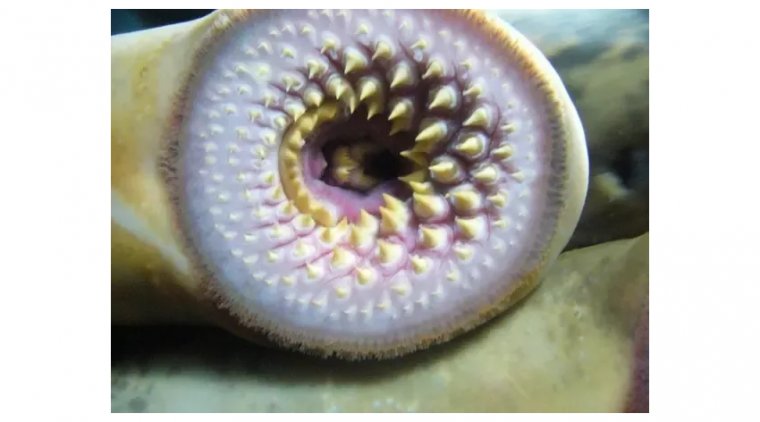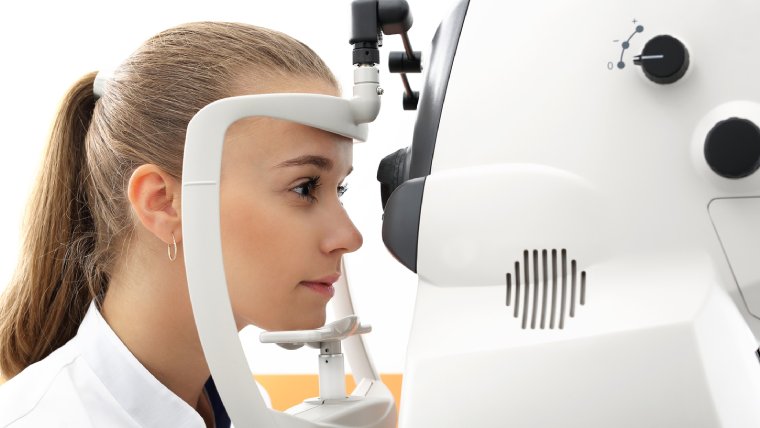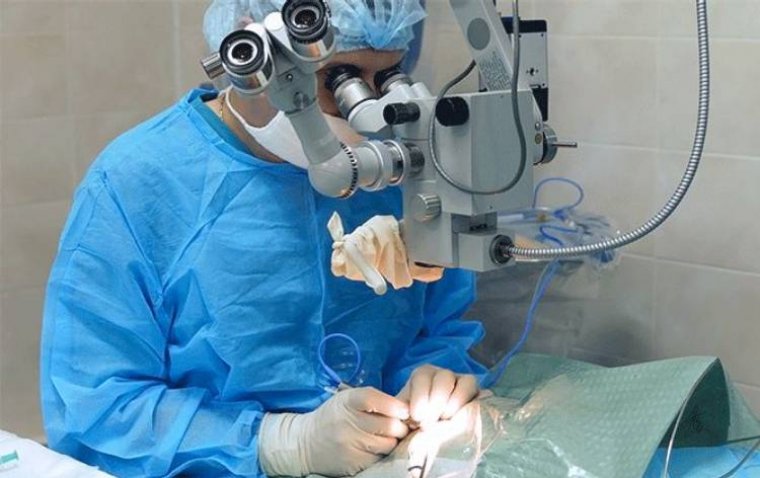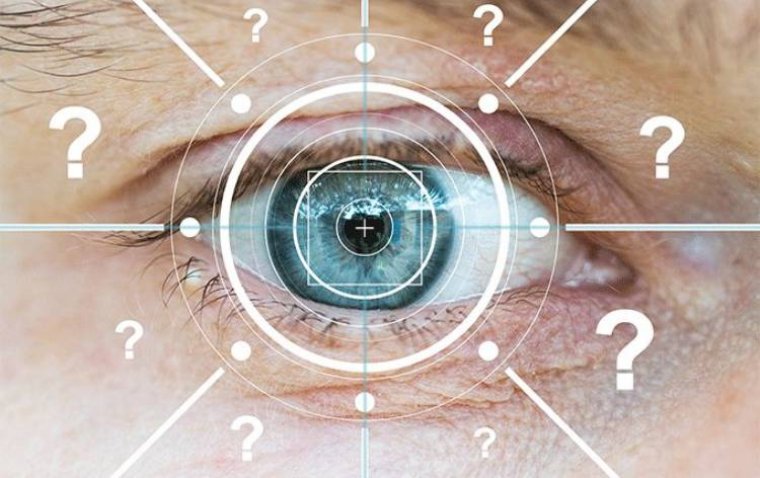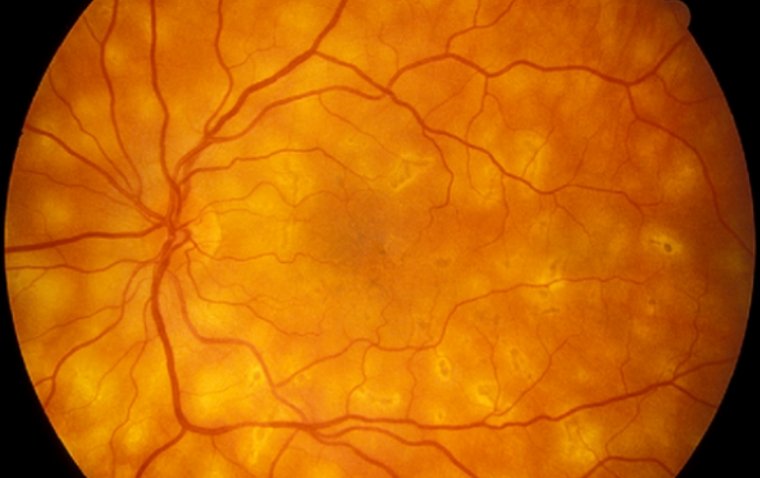
Eyes on the Sparrow: Unfolding the Mystery of Birdshot Chorioretinopathy
What Is Birdshot Chorioretinopathy?
Just as a birdshot from a shotgun scatters in a wide pattern, Birdshot Chorioretinopathy marks the retina with a distinct scatter of cream-colored spots, painting a characteristic pattern that gives the condition its unique name.
Definition and Overview
Birdshot Chorioretinopathy is a rare, chronic form of posterior uveitis, primarily affecting the choroid and retina of the eye. It's a condition that soars under the radar, often presenting asymptomatically in the initial stages and, hence, can be challenging to diagnose early.
The characteristic lesion distribution - small, cream-colored spots scattered across the retina - is reminiscent of a birdshot scatter pattern, hence the name. These spots, seen predominantly around the optic disc and along the retinal vessels, are hallmarks of this condition.
1. Autoimmune Uveitis
Birdshot Chorioretinopathy is considered an autoimmune disease, a condition where the immune system mistakenly targets and attacks the body's own cells – in this case, the cells of the uveal tract. While the exact pathogenesis remains a mystery, it's generally thought that a misguided immune response initiates inflammation in the retina and choroid, leading to the characteristic birdshot lesions.
2. HLA-A29 and the Rarity of Birdshot Chorioretinopathy
Adding to the enigmatic nature of Birdshot Chorioretinopathy is its strong association with the human leukocyte antigen (HLA) system, specifically the HLA-A29 gene. This gene is found in over 95% of patients with this condition, a prevalence that far surpasses chance, suggesting a strong genetic predisposition.
However, like a rare bird species, Birdshot Chorioretinopathy is uncommon, accounting for only a small fraction of uveitis cases. Its rarity, combined with its insidious onset, characteristic clinical features, and unique genetic association, makes it a fascinating subject in the world of ophthalmology.
Symptoms of Birdshot Chorioretinopathy
The symptoms of Birdshot Chorioretinopathy, much like its namesake birdshot scatter, can be diffuse and varied. This spectrum of symptoms coupled with its chronic nature makes it a condition that demands our keen attention and meticulous care.
Birdshot Chorioretinopathy often presents subtly, and it may take months or even years before the symptoms become evident. Here's a glimpse into the common symptoms that individuals with Birdshot Chorioretinopathy may experience:
● Visual Disturbances: These could range from floaters, which are small specks or clouds moving in the field of vision, to blurry or distorted vision. These visual disturbances are often more noticeable in low-light conditions, such as during dawn or dusk.
● Reduced Contrast Sensitivity: Patients may notice a reduced ability to distinguish between shades of colors or between an object and its background, especially in poor lighting.
● Nyctalopia or Night Blindness: Difficulty seeing in low light or at night is a common symptom.
● Photopsia: Some individuals may experience flashes of light in their vision.
The symptoms of Birdshot Chorioretinopathy can be highly variable, with some individuals experiencing mild symptoms, while others may have more severe visual disturbances. The condition also has a chronic course, with periods of flare-ups and remissions. This variability and chronicity mean that long-term management and regular follow-ups are essential to preserving visual function and quality of life.
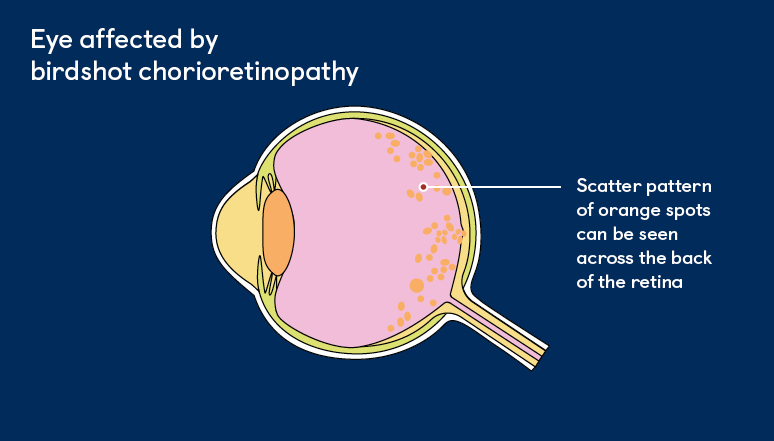
Causes and Risk Factors of Birdshot Chorioretinopathy
Navigating through the maze of Birdshot Chorioretinopathy's causation and risk factors is a journey of intrigue and discovery. Like tracking the flight patterns of a rare bird, we find that the origins of Birdshot Chorioretinopathy are influenced by a delicate interplay of genetic predispositions, potential environmental factors, and underlying immunological mechanisms.
Underlying Causes and Mechanisms
Despite ongoing research, the exact cause of Birdshot Chorioretinopathy remains elusive. However, it is believed that a misguided immune response plays a crucial role in the disease's pathogenesis. This autoimmune reaction, primarily targeting the choroid and retina, triggers inflammation that results in the characteristic birdshot lesions.
Genetic Predisposition - The HLA-A29 Gene:
A significant feather in the cap of Birdshot Chorioretinopathy research is the discovery of its strong genetic association. The HLA-A29 gene, a part of the human leukocyte antigen (HLA) system involved in immune response, is found in an overwhelming majority of Birdshot Chorioretinopathy patients. This association suggests that individuals carrying this gene may have an increased susceptibility to develop the disease.
Environmental and Immunological Factors:
Although the HLA-A29 gene is a significant piece of the puzzle, it alone doesn't fully explain the development of Birdshot Chorioretinopathy. Other factors are likely at play:
● Environmental Triggers: Some researchers hypothesize that an environmental factor, possibly a virus or another infectious agent, may trigger the autoimmune response in genetically susceptible individuals.
● Immunological Factors: As an autoimmune disease, Birdshot Chorioretinopathy involves dysregulation of the immune system. Certain immune cells or inflammatory molecules may be key players in its pathogenesis.
How to Diagnose Birdshot Chorioretinopathy
Diagnosing Birdshot Chorioretinopathy often requires us to don the hats of detectives, piecing together clues from medical history, clinical examination, and specialized tests to reach the correct conclusion.
Diagnostic Process:
The diagnostic journey for Birdshot Chorioretinopathy often begins when patients present with visual disturbances or when clinicians spot the characteristic birdshot lesions during routine eye examinations. The diagnostic process typically involves:
● Detailed Medical History: Gaining insight into the patient's medical history, symptoms, and the duration and pattern of these symptoms can provide valuable clues towards the diagnosis.
● Comprehensive Eye Examination: A thorough eye examination is crucial to assess for the presence of birdshot lesions. These are typically small, creamy spots that scatter across the retina and are most prominent around the optic disc and along the retinal vessels.
● Specialized Tests: Advanced imaging techniques and investigations, such as fluorescein angiography, optical coherence tomography, and indocyanine green angiography, can be instrumental in detecting and documenting the lesions. Moreover, electrophysiologic testing can aid in assessing retinal function, while HLA-A29 typing can support the clinical diagnosis.
Treatment Options for Birdshot Chorioretinopathy
Managing Birdshot Chorioretinopathy is not unlike guiding a flock of birds through turbulent skies. Our primary goals are to control inflammation, prevent vision loss, and ensure our patients can maintain their flight through life with minimal turbulence.
Treatment Goals
The main goals in treating Birdshot Chorioretinopathy are:
1. Control Inflammation: Suppressing inflammation in the retina and choroid can help reduce symptoms and slow the progression of the disease.
2. Preserve Vision: By controlling the disease and monitoring for complications, we aim to maintain visual function for as long as possible.
3. Improve Quality of Life: Effective management of symptoms can help improve patients' quality of life and reduce the disease's impact on their daily activities.
Treatment Approaches:
There are several treatment avenues that can be explored for Birdshot Chorioretinopathy, all with the aim of soothing the storm of inflammation that marks this condition:
● Corticosteroids: These potent anti-inflammatory drugs can be used to manage acute flares of inflammation. They may be administered as eye drops, oral medication, or injections, depending on the severity of symptoms and response to treatment.
● Immunosuppressive Medications: For patients with persistent or severe disease, or those who cannot tolerate corticosteroids, immunosuppressive drugs like methotrexate, mycophenolate mofetil, or cyclosporine can be used. These medications help reduce inflammation by suppressing the immune system's overactive response.
● Biologic Agents: Newer treatment options, such as biologic agents that target specific parts of the immune system, are emerging as promising alternatives for Birdshot Chorioretinopathy. These include medications like infliximab or adalimumab.
Research and Advances
In the pursuit of a clearer understanding of Birdshot Chorioretinopathy, we find ourselves at the frontier of ophthalmic research. Much like ornithologists tracking rare bird species, researchers worldwide are working tirelessly, navigating through uncharted territories, and unlocking new doors in the quest to demystify this elusive condition.
Current Research Efforts and Ongoing Studies:
Birdshot Chorioretinopathy research is a vibrant field, with several exciting avenues currently under exploration:
1. Pathogenesis: Greater understanding of the disease's underlying mechanisms is being sought, with researchers looking closely at the roles of the immune system, genetics, and potential environmental triggers.
2. Diagnostic Techniques: Efforts are underway to refine diagnostic techniques and improve our ability to detect and monitor Birdshot Chorioretinopathy. Advanced imaging techniques and their applications are a significant focus of these studies.
3. Genetic Research: While the association with the HLA-A29 gene is well established, research is ongoing to unearth other potential genetic factors that may contribute to the disease's development or impact its course.
Emerging Treatment Modalities and Novel Therapeutic Approaches
The horizon of Birdshot Chorioretinopathy treatment is expanding, and several promising therapies are under investigation:
● New Immunosuppressive Medications and Biologics: Novel drugs that target specific immune responses are being studied for their potential to treat Birdshot Chorioretinopathy. These could offer more precise control of inflammation and fewer side effects.
● Gene Therapy: With the strong genetic component of Birdshot Chorioretinopathy, gene therapy may hold promise for the future. Researchers are exploring whether modifying the HLA-A29 gene or its products could offer a new treatment paradigm.
Navigating through the vast landscapes of Birdshot Chorioretinopathy research, it's clear that we are on an exciting journey of discovery. With every research endeavor, we edge closer to understanding this rare bird of the ophthalmological world better. These advances will no doubt guide our strategies to better diagnose, manage, and potentially even prevent Birdshot Chorioretinopathy in the future.
Lifestyle Recommendations and Supportive Measures
Treating Birdshot Chorioretinopathy isn't just about prescribing medications—it's also about guiding patients through a series of lifestyle changes that can support their journey towards better vision. Like the fine adjustments a bird makes to its flight patterns to weather changing conditions, these small changes can have a profound impact on the course of the disease.
Lifestyle Modifications
Lifestyle adjustments can play a supportive role in managing Birdshot Chorioretinopathy and maintaining overall health:
● UV Protection: While research is ongoing to elucidate the full spectrum of environmental factors in Birdshot Chorioretinopathy, it is generally recommended that patients protect their eyes from excessive UV radiation. Sunglasses and hats can be effective measures to reduce UV exposure.
● Smoking Cessation: Smoking is a well-known risk factor for numerous health conditions, including certain eye diseases. While its direct impact on Birdshot Chorioretinopathy is yet to be established, quitting smoking can certainly contribute to overall eye health.
● Stress Management: Chronic diseases can often be stressors in themselves, and managing stress is an integral part of the holistic care approach. Techniques such as meditation, yoga, and other relaxation methods can be beneficial.
To Conclude…
As eye care professionals, we are the trained ornithologists in this vast ecosystem, equipped to identify these conditions, no matter how elusive, and guide our patients towards clearer horizons.
But the journey doesn't end here. Like a flock of migratory birds navigating their way through vast distances, we continue to explore the unknown, research the unexplored, and shed light on the mysteries of the human eye. The challenges are aplenty, but so are the rewards. As we continue our pursuit of knowledge and discovery, let's remember that in ophthalmology, as in birdwatching, it's all about keeping our eyes on the prize—be it a rare bird species or a breakthrough in treating a complex eye condition.
So here's to clearer skies ahead and a future where we not only understand these conditions better but are also equipped to handle them with greater precision, leading our patients out of the woods and into the light of better vision. After all, the eyes are not just the windows to the soul—they're the binoculars to the wonders of the world.
(1).jpg)
